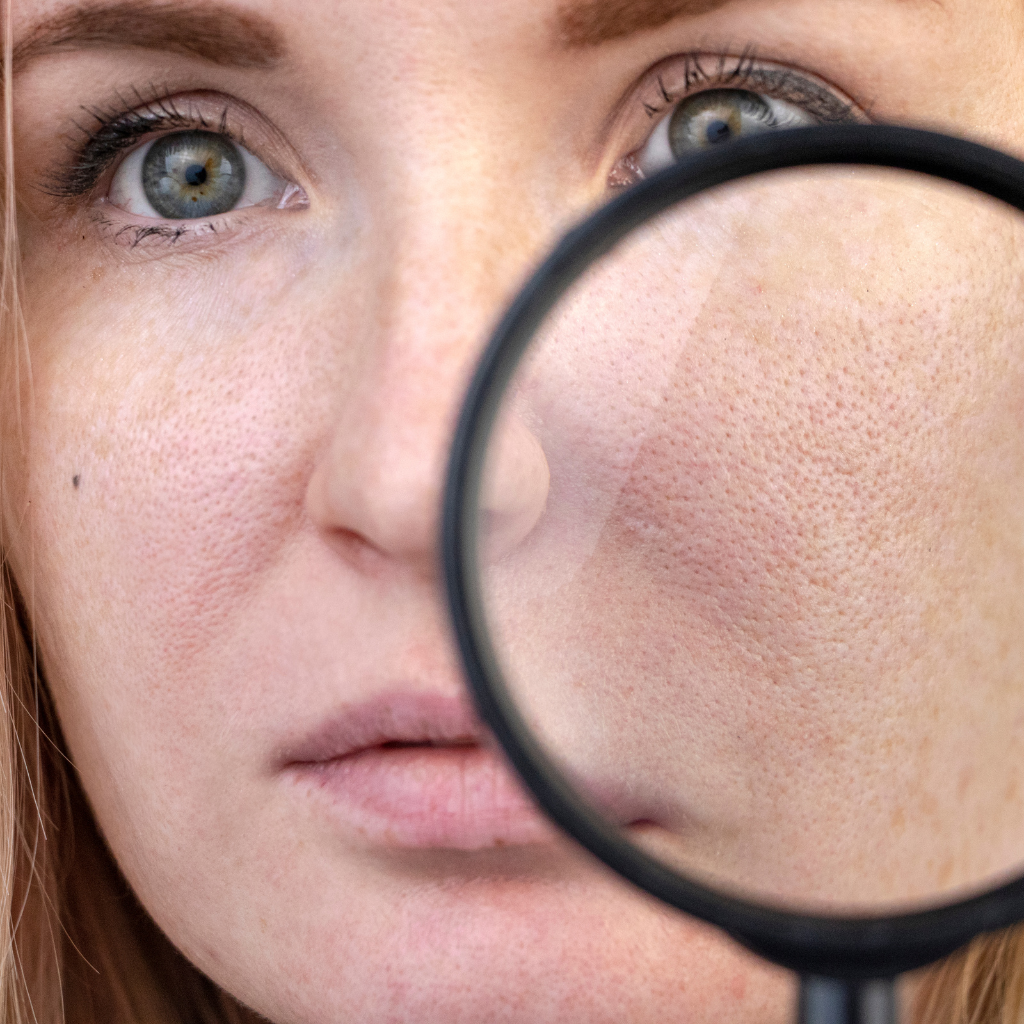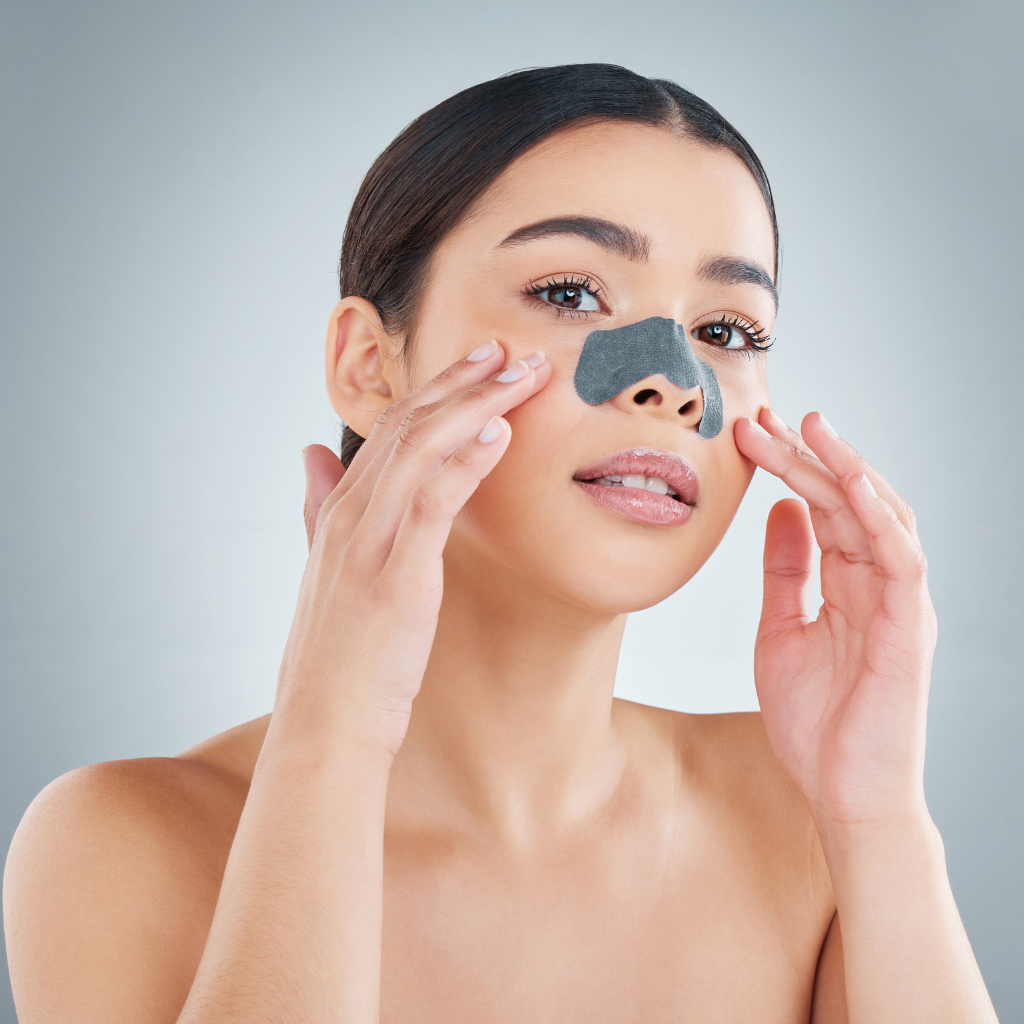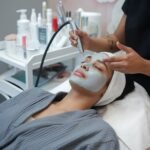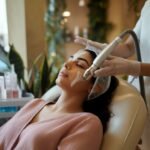How to Get Rid of Open Pores on Face Permanently
- Home
- skin-rejuvenation
- How to Get Rid of Open Pores on Face

Open pores can affect how smooth your skin looks. They appear as small openings where oil and debris might settle, leading to concerns about texture and clarity. Although pores are normal structures, many people look for ways to reduce their visibility. Understanding why they appear is the first step toward finding relief.
Clogged Pores vs. Enlarged Pores: Key Differences
Pores may look bigger or more visible when they’re clogged with oil or dead skin. Those blockages can turn into breakouts or give the skin a less refined surface. Enlarged pores, on the other hand, can stem from genetics, natural aging, or repeated stretching due to excess sebum. Each path demands a slightly different approach.
Factors Behind Open Pores
Sometimes, inherited traits make individuals more prone to visible open pores. Other times, environmental factors, like sun damage or pollution, play a part by weakening collagen and skin elasticity. Hormones can also cause oil glands to work overtime. If the skin produces too much oil, pores might stretch, making it harder to keep them clear.
High humidity can also frustrate the skin and lead to visible pore expansion. As sweat and extra oils gather, your pores can stay open longer than usual. Constant buildup not only enlarges them but creates an ongoing cycle of blemishes. Proactive care is essential for preventing this loop and helping skin stay balanced.
Looking at Pore Size
Pore size isn’t uniform for everyone. Some have tight, refined pores with fewer issues, while others have wide or enlarged openings that show up more clearly. Large pores might resemble small dots on areas with more sebaceous glands, like the nose and cheeks. When the skin has less elasticity, this effect becomes even more noticeable.
Another concern is when pores take on round or o-shaped pores visually, often tied to genetics or age. This shape can make each pore look deeper or more apparent under natural light. Once pores appear stretched, they can be stubborn. Targeted treatments, whether at home or in a clinic, can still help you regain smoother texture.
How to Reduce Large Pores on the Face Naturally
When trying to minimize pores, starting with gentle, consistent care often delivers positive improvements. Home strategies rely on regular cleansing, exfoliation, and soothing masks. They help manage oil production, remove debris, and keep the surface balanced. Natural methods won’t eliminate pores, but they can cut down on daily shine and make them less conspicuous.
Using a Clay Mask
Clay masks deliver impressive benefits for anyone concerned about open pores. Clay, such as bentonite or kaolin, absorbs extra oil and dirt from deep within the pores. This helps shrink their appearance temporarily and keeps them from getting clogged. Try using a clay mask once or twice weekly, applying a thin layer and rinsing with lukewarm water after it partly dries.
People often find that clay draws out impurities, so it’s good for oily or combination skin. If skin feels overly tight, follow with a light moisturizer. Combining clay with soothing agents like aloe can help those with more sensitive complexions. Consistent use supports skin clarity and helps you maintain a fresher look.
Essential Oils for Pore Care
Certain essential oils have properties that help keep pores from swelling or clogging. Tea tree oil can tackle bacteria that gather in pores and contribute to breakouts. Rosemary or lavender oils soothe irritation and regulate oil production, giving skin a calmer, balanced tone. Dilution is key: essential oils should never go straight onto your skin without a carrier like jojoba or almond oil.
A little can go a long way. A couple of drops added to your daily moisturizer might support your goal to minimize pores. A patch test on a small area ensures you won’t trigger redness or itching. With proper use, essential oils can become a gentle, natural ally in your skincare plan.
Chemical Peel and Other Professional Treatments
Home strategies might be enough for mild pore concerns, but persistent or severe cases often benefit from professional help. Experts can evaluate your skin type, pore size, and root causes and then propose treatments that go deeper. Options typically include clinical procedures like a chemical peel, microneedling, or laser therapy to tackle both texture and tone.
Treatments to Minimize Pores
Microdermabrasion uses fine crystals or a diamond tip to exfoliate the top layer of skin. This process reduces surface irregularities, including old, dead cells that can make pores more noticeable. Microneedling creates tiny punctures that stimulate collagen production, firming the area around each pore. Laser treatments target the deeper layers, promoting the remodeling of collagen for sustained results.
Another advanced technique is radiofrequency (RF) microneedling, which merges heat energy with controlled micro-injuries. This encourages collagen restructuring and tightens the skin more profoundly. No matter the method, consistency, and follow-up appointments are crucial. A single session can improve the look of your pores, but multiple treatments bring longer-lasting changes.

Addressing O-shaped pores
Sometimes, pores are especially stubborn and take on a pronounced circular shape. In those instances, your skin specialist might recommend a chemical peel or deeper laser resurfacing. A chemical peel removes a thin layer of surface cells, letting fresher cells grow. These procedures ramp up collagen production, which helps tighten and refine o-shaped pores.
An esthetician or dermatologist may tailor the peel’s strength to your tolerance. Possible formulas include glycolic acid, salicylic acid, or trichloroacetic acid (TCA). Each solution helps in different ways, but all aim to smooth the top layers and regulate oil. Such treatments, combined with diligent home care, usually unlock significant and lasting improvements in skin texture.
How to Maintain Results and Prevent Future Issues
Even after successful pore-reducing treatments, upkeep is vital. Daily use of gentle, non-stripping products keeps possible clogs at bay. Ongoing care will help you hold onto the gains you’ve made. Adopting a balanced, protective routine keeps new pores from enlarging and helps older pores stay tight and controlled.
Daily Care to Close Open Pores
Strategies can be simple. Washing the face every morning and night with a mild cleanser removes overnight grime and daytime impurities. Following with a suitable toner can help whisk away residue. Serums and moisturizers with ingredients like niacinamide or hyaluronic acid lock in hydration without creating a heavy film.
Consider sunscreen each day since UV damage can worsen pore appearance by breaking down collagen. A water-based sunscreen may suit those who worry about greasiness. The point is that consistency works better than any one-time trick. A stable, unclogged pore will appear less visible and help prevent further stretching down the line.
Lifestyle Choices for Balanced Skin
Beyond products, certain changes to your daily habits can make a difference. Drinking enough water helps keep cells functioning properly. Cutting back on processed sugars may reduce abrupt spikes in oil production. Managing stress is another piece of the puzzle: high-stress levels can throw hormones off balance and contribute to breakouts.
Below is a simple table with lifestyle tips and benefits to your pores:
Lifestyle Tip | Pore Benefit |
|---|---|
Stay hydrated | Helps regulate oil production |
Use sun protection | Prevents collagen damage |
Eat balanced meals | Avoids excessive sebum spikes |
Manage stress | Maintains hormonal balance |
A few mindful steps can extend your pore-tightening results and protect your complexion from new concerns.
Other Tips to Tackle Large Pores
Not everyone faces the same causes or severity of open pores. Some people battle chronic oiliness, while others experience dryness with a few enlarged spots. Customizing each strategy to match specific conditions can make a world of difference. Sometimes, tiny tweaks like switching a product or adjusting a habit can lead to marked improvements.
Handling Extra Oil Production
Frequent blotting or using oil-absorbing wipes can help if the face gets shiny throughout the day. Alternating active ingredients can stop over-exfoliation. Alpha-hydroxy acids (AHA) and beta-hydroxy acids (BHA) might be used on different nights so the skin isn’t overwhelmed. With steady routines, pore size tends to look smaller, and sudden oil surges become less frequent.
Speaking of surges, try not to pick or squeeze pores. Doing so can trigger inflammation or even infection. Patience with gentle exfoliation or professional extraction is far safer. Regular visits to a qualified esthetician can help keep blackheads under control and discourage pores from becoming permanently larger.

Choosing the Right Skincare
Pore-friendly skincare includes words like “non-comedogenic” or “oil-free.” These labels signal that the product is less likely to fill pores with unneeded oils or waxes. Look for cleansers containing mild ingredients like chamomile or green tea to calm any irritation. For toners or spot treatments, salicylic acid is often recommended to break down clogs.
Retinol-based creams are also renowned for smoothing skin texture over time. They encourage cellular turnover so dead cells can’t linger and block follicles. Give new products a trial run for about four to six weeks to see noticeable changes. Pairing the right formulas can lead to softer, brighter skin and a more refined look.
Conclusion
Visible pores can seem stubborn, but combining steady routine care with professional help can really transform the skin. Actions like using a clay mask, managing oil, and investing in a chemical peel or laser treatment can help shrink the look of open pores. Improvements take time and patience, yet consistent steps offer a path to smoother, healthier skin.

Highly skilled cosmetologist at Tune Clinical Aesthetics, specializing in advanced skin and hair treatments.





